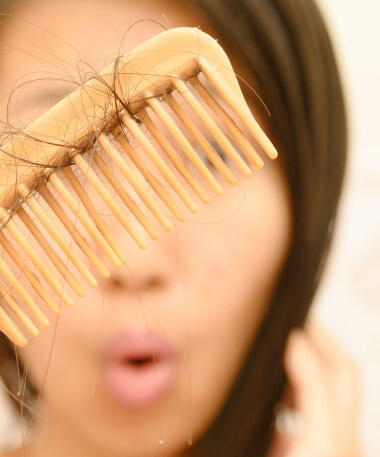There are a seemingly infinite number of options available when it comes to makeup. From mascara to eye shadows, concealer to foundation, not only are there a staggering number of brands and formulations offered for any given item, there are new products breaking into the marketplace each day! While it can be fun to try new makeup items, it is also important to be aware and understand what these products may contain.
Studies have shown that conventional makeup can result in 50 pounds or more of chemicals being added into our bodies each year and an estimated 175 chemicals being applied to the body in an average daily routine. This is because our skin acts as a gateway for toxins to enter our bodies. When makeup is applied to the skin, the ingredients in the makeup are quickly absorbed. They are not passed through the digestive system, which could provide a method for removing potential toxins. Absorption through the skin generally means that whatever chemicals are present in the makeup will be present in the bloodstream without being detoxified.
There are a number of chemicals found in conventional makeup and beauty products, with the worst offenders being parabens, phthalates, and formaldehyde. These chemicals are the cause of concern for fertility, reproductive complications, allergies, and cancer.
Parabens
Parabens are found in cosmetics, personal care products, and even some baby products. Parabens interrupt the normal functioning of the endocrine system and can contribute to the development of a number of severe allergies.
Phthalates
Phthalates are found in soaps, shampoos and conditioners, lotions, and perfumes, and are often disguised by using the term “fragrance.” A derivative of petrochemicals, phthalates have been linked to hormone disruption and fertility issues.
Formaldehyde
Formaldehyde is found in most nail polishes and is highly toxic. Formaldehyde is a volatile organic chemical and is a known carcinogen. In addition, chemical preservatives known as BHA and BHT are found in moisturizers and makeup products. These preservatives are both suspected endocrine disrupters and are potentially linked to cancer.
Aluminum
Aluminum is another additive that can be found in a vast number of products from antiperspirants to shampoo. It too acts as a hormone disrupter and is able to mimic estrogen, fooling our bodies and causing our endocrine systems to function improperly.
Lead
Lead, one of the main ingredients in lipsticks, is a highly toxic heavy metal and is very difficult for our systems to remove once it is in our bodies. It is associated with a number of neurological problems, blood disorders, and depression.
Natural Alternatives
Personal care and makeup products that are genuinely natural and good for the body will contain only pure ingredients like fruit and vegetable pigments, oils, butters, and fragrances. Look for products that are free from synthetic preservatives and fragrances (often shown on labels as parfum), artificial ingredients, and toxins. Avoid those products that contain the chemicals listed above, as well as products that are obviously artificially coloured or scented.
It can be intimidating to make the transition to a natural makeup line, and most of that can come down to the first impression of the packaging. Natural cosmetic lines don’t spend money on their image as much as they do their ingredients and process, so it can all tend to blend into the shelf. When selecting natural products it is best to start slow and with your must-have routine items. This not only allows you to experiment to find what you like best but also reduces your chemical exposure the most.



